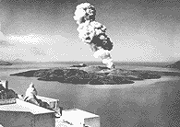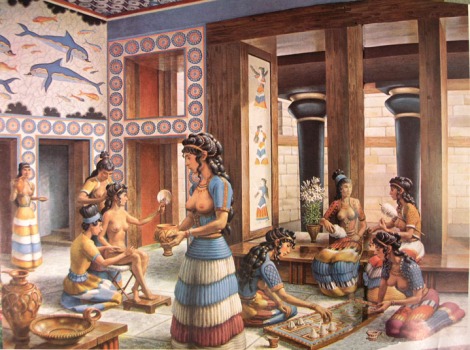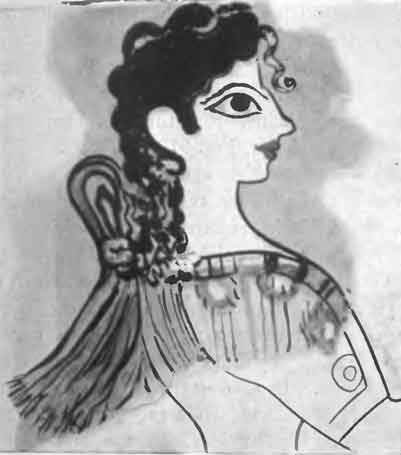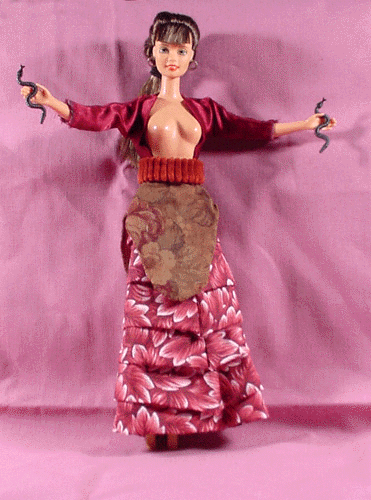When I was about ten years old in 1961, I eagerly awaited the arrival of a movie called Atlantis, the Lost Continent. But it never showed up at my neighborhood theater on the north side of Chicago, and I had to wait until many years later to see it on television.

Movie posters like this really stirred up excitement, unlike the bland ones of today!
As I look at the screenplay credits, I realize that it was written by Daniel Mainwaring, who authored both the original novel and the script of one of the great films noir, 1947’s Out of the Past with Robert Mitchum, Kirk Douglas, and Jane Greer. But I digress…
Atlantis wasn’t a great movie, but it had its thrilling moments, and I also learned years later that the legend of Atlantis was possibly based on a real place called Thera, a volcanic island near Crete. Here is a map showing the relation of Thera, now called Santorini, to Crete, as well as the geological structure of the underlying area.

Plato mentioned the story of Atlantis in his Dialogues, and may have been influenced by stories about Thera.
The Cretan, or Minoan civilization (named after its legendary King Minos), of which Thera was a part, was a highly developed culture way back in the Bronze Age over four thousand years ago. They probably didn’t have giant ray guns as in the Atlantis movie fantasy, but apparently they had good things like advanced plumbing and burgeoning metal industries that gave them a flourishing import business which also brought the Minoans into contact with other great cultures of the era, such as the Egyptians. When the volcano on Thera exploded around 1450 B.C., the Minoan civilization began its decline after a good fifteen hundred years of prosperity. Soon they would be ruled by the warlike mainland Greeks, who had not yet warmed up into the cradle of democracy they would become.

From being a great seagoing power...

...the Minoan civilization was eventually laid low by a volcano. This was a 1950 eruption on Thera, now called Santorini.
But in their heyday the Minoans were artisans, merchants, sailors, builders of great palaces such as that of Knossos, and they were also apparently a pleasure-loving people who loved to dance, playfully leap over bulls by grasping onto their horns (!), and were able to live with each other side-by-side in communities with different chieftains, but in relative peace. Most intriguing of all…the Minoans, especially the women, were visionary fashion plates!

Here is an artist's rendition of a Minoan palace scene...
Yes, that’s right—no bodices. Unmarried females went bare-breasted, and their waists were cinched and their hips emphasized by bell-like skirts that almost resembled the bustles of the women’s fashions of the late 1800s, early 1900s. The Minoan civilization first came to light in the early twentieth century thanks to archaeological discoveries, and one of the artifacts found so reminded people of contemporary French women that she was nicknamed “La Parisiana.”

"La Parisiana" from 4,000 years ago; hmm, she does have that "Belle Epoque" look about her...
I found the image of the palace on the site of an artist named Thomas Baker who specializes in making exquisite paintings in the old master styles, and utilizing authentic archaeological details when applicable to the subject matter. Here is his image of the Minoan princess Ariadne, waiting at the entrance to the labyrinth under the palace of Knossos. She will give her Greek lover Theseus a sword to battle the deadly Minotaur within, a monster to which Greek youths have been regularly sacrificed; and she will also give him a skein of yarn to unravel as he penetrates the maze, and which will help him find his way out…

The skulls represent the earlier victims of the Minotaur within the maze, a monster who is half-bull, half-man...
According to Baker’s research, the depiction of the Minoan palace scene is extremely accurate (he didn’t paint it himself, but found it in a book about ancient history), right down to the board game called “zatrikio” that the two beauties are playing on the floor.
It makes sense that in a culture where nubile and fertile young women walked around topless, that the major ruling deity was female…an earth mother, sometimes called Britomartis, an all-encompassing Goddess of the land and the sea and the stars, patroness of war and peace, protector of virgins and new births. She could bring earthquakes, but she could also bring the flowers to bloom. In fact, she had a young god of flora who accompanied her on her rounds through the world. And, also known as “a tamer of beasts”–perhaps having as her “significant other” the omnipresent bull spirit known as “Earthshaker,” symbol of the masculine–she was also visualized as a “snake goddess,” even though snakes apparently were not plentiful in the region and that aspect of her cult was probably imported from elsewhere.

Apparently the snakes that were in the region were generally of the harmless variety...

Even a goddess knows she must keep up her figure training! Talk about a tight-laced waist!
It has been said that the goddess was worshipped in many places, from caverns to mountaintops to small dark rooms to the courts of palaces. Needing an escape from 2009, I am right there now, happily lost in the crowd of Minoan men and women, bare-chested but attired appropriately in my fancy headdress and “phallustache,” a kind of loincloth.

Me and my "phallustache." Cute name for a loincloth, right?
I don’t know about grabbing the horns of any bulls and jumping over them, but I like to dance, and hmm, there’s a nice cutie with a pair of fetching C-cups coming my way…glammed up just like a snake goddess, too!
And how do you like this? She tells me her name is Barbie!

I wonder if they have this Barbie on display at the 50th anniversary exhibit of the dolls at Bloomingdale's in New York City?
————
I found the image of Barbie at a website for a history course about Aegean art and archaeology that has some interesting links for more information.